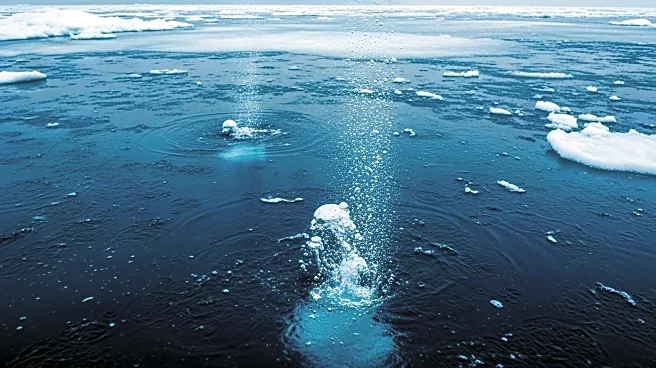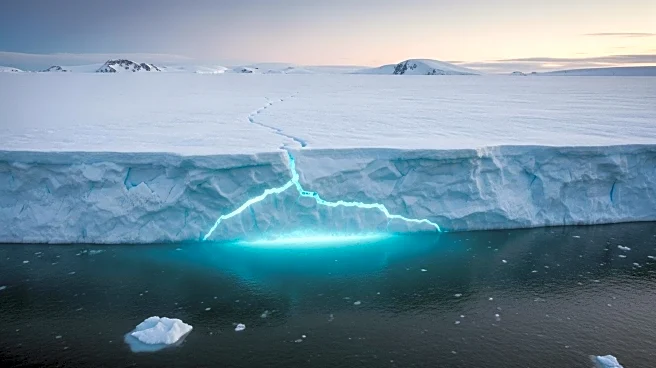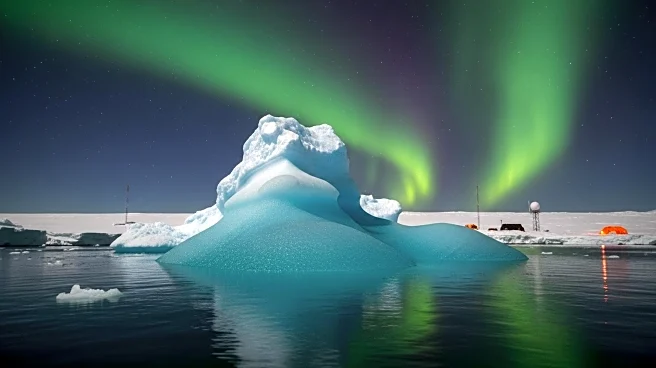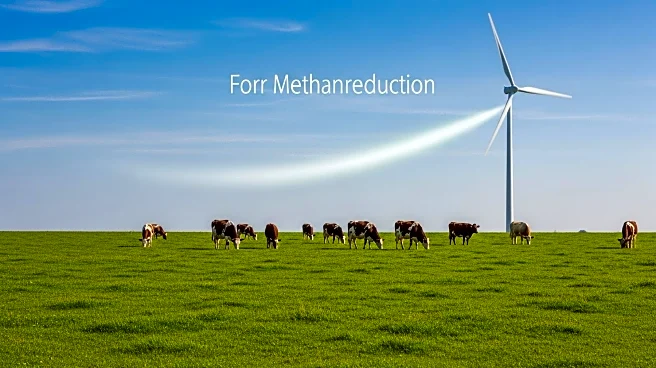What's Happening?
Researchers have identified significant methane emissions seeping from cracks in the Antarctic seabed, according to a study published in Nature Communications. Methane, a potent greenhouse gas, is escaping at high rates as the region experiences unprecedented warming. The study highlights the presence of numerous seafloor seeps of fluid and gas in the Ross Sea, particularly in the Northern Victoria Land and McMurdo Sound. These emissions are linked to the seepage of fluids rich in hydrocarbons, and the phenomenon is described as widespread rather than rare. Methane is considered a 'super pollutant' by the U.S. Environmental Protection Agency, contributing significantly to global warming.
Why It's Important?
The discovery of methane leaks in Antarctica is significant due to the gas's impact on climate change. Methane is responsible for about a third of current anthropogenic global warming and is 25 times more potent than carbon dioxide. The study underscores the vulnerability of greenhouse gases stored in subsea permafrost reservoirs to climate change. As ice sheets and glaciers reduce, hydrostatic pressure on subglacial hydrate reservoirs decreases, potentially enhancing methane discharge. Understanding these dynamics is crucial for predicting future climate impacts and developing mitigation strategies.
What's Next?
Further research is needed to fully understand the role of methane emissions in Antarctica and their implications for climate change. Scientists emphasize the importance of studying the dynamics of fluid and gas release from significant reservoirs in the region. This research could inform global climate policy and efforts to curb greenhouse gas emissions. Monitoring and addressing these emissions are critical steps in mitigating their impact on global warming.
Beyond the Headlines
The study highlights the broader implications of climate change on polar regions, where the reduction in ice mass is affecting methane release dynamics. This underscores the interconnectedness of climate systems and the need for comprehensive climate models that account for these variables. The findings may also influence international climate agreements and policies aimed at reducing greenhouse gas emissions.










